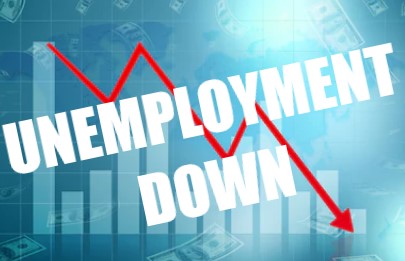
SPRINGFIELD – The Illinois Department of Employment Security (IDES) announced today that the unemployment rate decreased -0.3 percentage point to 7.1 percent, while nonfarm payrolls were up +32,200 jobs in March, based on preliminary data provided by the U.S. Bureau of Labor Statistics (BLS) and released by IDES. The February monthly change in payrolls was revised from the preliminary report, rising from +21,100 to +37,300 jobs. The February unemployment rate was unchanged from the preliminary report, remaining at 7.4 percent.
The March payroll jobs estimate and unemployment rate reflects activity for the week including the 12th. The BLS has published FAQs for the March payroll jobs and the unemployment rate.
In March, the three industry sectors with the largest over-the-month gains in employment were: Leisure and Hospitality (+13,700), Construction (+6,300) and Professional and Business Services (+6,300). The industry sectors that reported monthly payroll declines were: Government (-2,600), Financial Activities (-700) and Information (-200).
“Today’s data is a positive step in the right direction in restoring the workforce a year after the COVID-19 pandemic devastated state and national economies and left thousands jobless,” said Deputy Governor Dan Hynes. “While there is still more work to recover from the effects of this virus, the Pritzker administration remains fully committed to supporting claimants and dislocated workers and getting our economy back on track.”
“Deliberate actions taken by the State to protect and support our residents, businesses and communities during the pandemic are continuing to pay off as Illinois has recorded back-to-back improvements in 2021 reducing unemployment and bringing jobs back to our communities,” said Sylvia Garcia, Acting Director of the Department of Commerce and Economic Opportunity (DCEO). “With strong indications that the Illinois economy is turning a new corner, Governor Pritzker’s administration will continue to bring forward investments needed to support job creation, economic recovery and enable a safe environment for workers and consumers to return with confidence.”
The state’s unemployment rate was +1.1 percentage points higher than the national unemployment rate reported for March, which was 6.0 percent, down -0.2 percentage point from the previous month. The Illinois unemployment rate was up +3.4 percentage points from a year ago when it was 3.7 percent.
Compared to a year ago, nonfarm payroll employment decreased by -360,700 jobs, with losses across all major industries. The industry groups with the largest jobs decreases were: Leisure and Hospitality (-145,300), Educational and Health Services (-54,300) and Government (-46,400). Illinois nonfarm payrolls were down -5.9 percent over-the-year as compared to the nation’s -4.5 percent over-the-year decline in March.
The number of unemployed workers fell from the prior month, a -4.0 percent decrease to 436,400, and was up +85.2 percent over the same month for the prior year. The labor force was down -0.1 percent over-the-month and down -3.4 percent over-the-year. The unemployment rate identifies those individuals who are out of work and seeking employment. An individual who exhausts or is ineligible for benefits is still reflected in the unemployment rate if they actively seek work.
In May 2020, Governor Pritzker launched Get Hired Illinois, a new one-stop-shop website to help connect job seekers with hiring employers in real time. The site features virtual job fairs, no-cost virtual training, and includes Illinois Job Link (IJL), the state’s largest job search engine, which recently showed 40,360 posted resumes with 112,641 available jobs.
Seasonally Adjusted Unemployment Rates
Illinois Seasonally Adjusted Nonfarm Jobs – by Major Industry
- 1976-2020 seasonally adjusted labor force data for Illinois, and all other states, have been revised as required by the U.S. Bureau of Labor Statistics (BLS). The monthly historical revisions to state labor force estimates reflect new national benchmark controls, state working-age population controls, seasonal factors, as well as updated total nonfarm jobs and unemployment benefits claims inputs. Illinois labor force data were also smoothed to eliminate large monthly changes as a result of volatility in the monthly Current Population Survey (CPS) and national benchmarking. For these reasons, the comments and tables citing unemployment rates in previous news releases/materials may no longer be valid.
- Monthly seasonally adjusted unemployment rates for Illinois and the Chicago-Naperville-Arlington Heights Metropolitan Division are available here.
- Monthly 2016-2020 seasonally adjusted nonfarm payroll employment data for Illinois have been revised. To control for potential survey error, the estimates are benchmarked annually to universal counts derived primarily from unemployment insurance tax reports.
- Not seasonally adjusted jobs data with industry detail are available here. “Other Services” include activities in three broad categories: personal and laundry; repair and maintenance; and religious, grant making, civic and professional organizations. Seasonally adjusted data for subsectors within industries are not available.
About the Department of Employment Security
The Illinois Department of Employment Security (IDES) provides vital employment services to Illinois workers, employers, and job seekers with resources including Job Fairs and Illinois Job Link, analyzes and disseminates actionable Labor Market Information, and administers the Unemployment Insurance Program. To see the full range of services provided by IDES, and for the latest news concerning the department, visit IDES.Illinois.gov.













